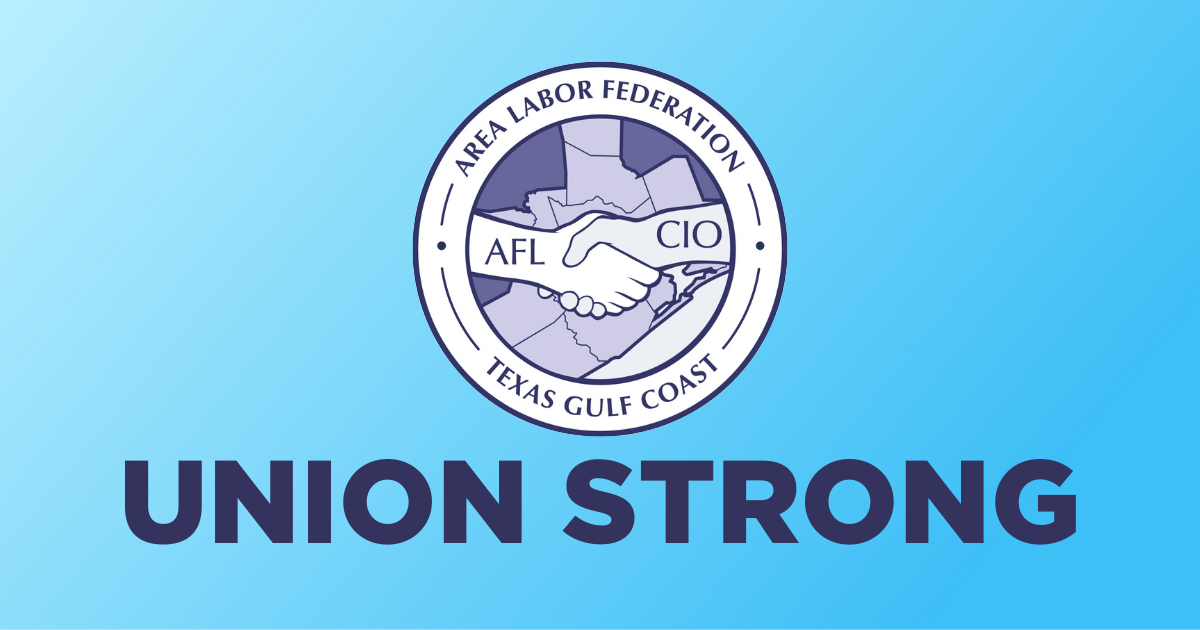Texas Gulf Coast Area Labor Federation Executive Director Hany Khalil was recently appointed to the AFL-CIO General Board, a main decision-making body at the AFL-CIO where he will serve as a regional representative.
Among the general board’s top responsibilities: endorsing a presidential candidate and issuing policy recommendations that reach 12.5 million AFL-CIO members.
In 2021, for example, the AFL-CIO general board called on President Trump to resign or be removed from office after the Jan. 6 Capitol attack. The board described the former president as an “affront to every union member, and a clear and present danger to our nation and our republic.”
Khalil tells the Signal the appointment to the general board is a sign AFL–CIO President Liz Shuler recognizes how important Texas is as a battleground, both electorally and for building union power. He said it also shows that the Texas Gulf Coast Area Labor Federation (TGCALF) has been particularly effective among labor councils in the South.
The formation of the 60,000-member strong TGCALF itself, where Khalil has served as executive director since 2016, was also born out of a continued effort to organize the South.
In 2013, the AFL-CIO adopted a resolution calling for a “Southern Strategy” because the national labor effort had never “successfully developed a concerted and coordinated effort to organize workers” in the South.
Two years later, TGCALF was created by a merger of five local central labor councils that represented unions in 13 Gulf Coast counties.
The merger was part of an effort by AFL-CIO Executive Vice President Tefere Gebre to revitalize local labor councils in the South.
“Unless we raise wages and fight in the South, I don’t think we’re safe in the North or the Midwest or anywhere else,” Gebre told The American Prospect magazine of the organizing effort. “What happens in the South sooner or later comes to the rest of the country.”
Houston was one of five cities in the South selected for the national labor initiative. The idea was to provide local labor councils with enough resources to build union power and influence politics.
“The national AFL-CIO recognized that and many of our local unions had been looking for that and trying to figure out ways to do that, and what they agreed upon was merging these labor councils in 2015 that had been working separately in multiple counties,” Khalil said.
Prior to the merger, Harris County AFL-CIO was the only local labor council that could afford a full-time staff, according to a report commissioned by the AFL-CIO. The others were volunteer-driven, and three of the labor councils were in “danger of trouble with the IRS” due to failure to file routine paperwork, per the report.
“Particularly in right-to-work states where workers have little power, the labor movement tends to be small and therefore [labor councils] tend to be built on a volunteer basis,” Khalil said.
Under the merger agreement, the national AFL-CIO would help match the resources raised locally and provide technical support for the area labor federation.
The merger brought a bigger, permanent staff to help further unionze the Houston area and operate on more ambitious regional programs, whether it is expanding the labor federation’s electoral work (currently eagerly stumping for Harris County Judge Lina Hidalgo), or door-knocking relief programs created following Harvey and the pandemic, like Keep Harris County Housed, a coalition of local union affiliates that helped more than 7,000 area residents at risk of eviction in 2020.
“All of this I think has been helpful in both providing relief to unemployed workers, some of whom are our members, many of whom are not, and to be part of the long-term effort of raising our stature and role and influence and visibility as a labor movement in Harris County and the Gulf,” Khalil said of the reorganization.
It is not the first time the national labor movement has turned their attention to the American South. In 1946, the Congress of Industrial Organizations launched “Operation Dixie,” a massive and expensive effort that saw organizers travel south to unionize the workforce.
The effort failed, and a year later Congress passed the Taft–Hartley Act, the most anti-union law in U.S. history which prohibited general strikes, depriving the national labor movement of one of their most effective tools against unresponsive governments and industry.
The failure of Operation Dixie was one of the factors that led to the merger between the Congress of Industrial Organizations and American Federation of Labor. It also marked the beginning of an era of declining union membership that persists to this day. According to labor historian Michael Goldfield, the failure of unions to organize the South, “left southern Dixiecrats and the system of white supremacy with complete social, political, and economic hegemony intact in much of the South.” Decades later Republicans would create their own Southern Strategy, one that appealed to racist white voters to accelerate the realignment of Dixiecrats to reliable GOP voters.
Khalil, a former Houston ISD social studies teacher who served as vice-president of the Houston Federation of Teachers before leading TGCALF, joined the union movement in the 1990s organizing graduate student employee strikes at the University of California.
“The labor movement there was really in a period of experimentation and fermentation, and figuring out new paths to build power,” Khalil said of The Golden State in the 90s.
The United Auto Workers, for example, were beginning to seek membership in higher education (where a surprisingly significant growth of the union’s membership is now found). Service Employees International Union was starting to organize janitors, and public employee unions were forming too. The revived labor movement in Southern California focused on organizing, defending immigrant rights, and creative strategies, like looking to local government as a tool to level the playing field for workers.
“That’s really where the labor movement has moved, and it’s largely because of regions like Los Angeles that have shown that’s how the labor movement can revive, grow and be dynamic, and can attract young people to it and can be a real force for progress,” Khalil said.
Khalil says recent union election victories in companies like Starbucks and Amazon are thrilling, and are organizationally impressive because wins and know-how are quickly communicated across the country.
“I think the labor movement is learning more about how to organize by taking advantage of technologies like Zoom,” Khalil said.
“Normally it’s done with a heavy investment by trained organizers building a committee underground so that workers can organize safely until they’re ready to come out and call for an election,” Khalil said. “In this case, that has been less the model than it has been: success in one place gets the word spread, workers start getting in touch with them, they get in a Zoom call, they learn the basics of how to organize, they start organizing their coworkers, and they’re able to file for an election.”
The biggest issue facing the labor movement today, Khalil says, is how the Trump-centered MAGA movement has been able to organize a set of workers into an alliance with the GOP, which has begun to aggressively take advantage of the undemocratic features of the country’s political system to gain power.
To combat this, TGCALF has made voting rights a top priority, including bringing roughly 100 members to Austin to lobby against the anti-voting rights legislation Senate Bill 1. Members also joined Texas Democrats as they broke quorum in Washington D.C., helping to fund their stay in the capital as the lawmakers attempted to bury the legislation.
“Trump has been very effective at convincing a set of workers that their main problem is immigrants at the border or abortion,” Khalil said.
“The reality is that’s not who their main problem is, the main dangers facing working people are an economy based on inequality, the threat to their safety by COVID, and this aggressive attack on our democracy,” Khalil said.
Fernando covers Texas politics and government at the Texas Signal. Before joining the Signal, Fernando spent two years at the Houston Chronicle and previously interned at Houston’s NPR station News 88.7. He is a graduate of the University of Houston, Jack J. Valenti School of Communication, and enjoys reading, highlighting things, and arguing on social media. You can follow him on Twitter at @fernramirez93 or email at fernando@texassignalarchive.com





